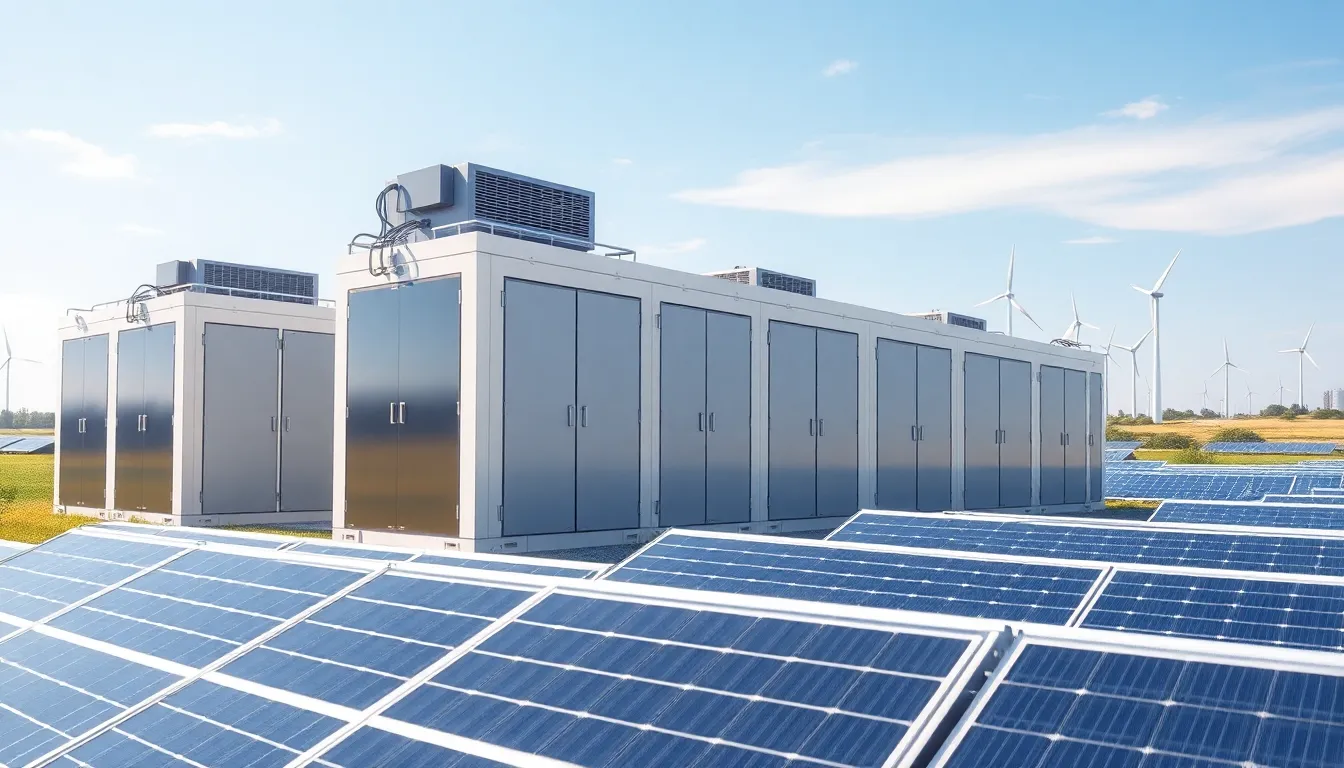Table of Contents
ToggleIn a world where technology evolves faster than a caffeinated squirrel, staying updated on the latest trends is essential. Enter ESS tech news—a treasure trove of insights that keeps tech enthusiasts and industry professionals on the cutting edge. From groundbreaking innovations to quirky gadgets that make life a little more fun, this is where the magic happens.
Imagine having a front-row seat to the tech revolution, where every click reveals something new and exciting. Whether it’s the latest in AI, cybersecurity, or the next must-have device, ESS tech news serves it all with a side of wit. So buckle up and prepare to dive into a realm where tech meets humor, and knowledge is just a scroll away.
Recent Developments in ESS Tech News
ESS tech news focuses on the latest advancements in energy storage systems, highlighting innovations and key players shaping the industry.
Innovations in Energy Storage Systems
Recent advancements in battery technology drive efficiency and performance in energy storage systems. Solid-state batteries now promise greater energy density and safety. New thermal management techniques enhance longevity and performance in extreme conditions. Emerging technologies, such as flow batteries and hydrogen storage, provide alternative solutions for grid storage challenges. Companies are investing in recycling processes for batteries, contributing to sustainability and circular economy goals.
Key Players in the Market
Several companies lead the energy storage market, competing with cutting-edge technologies. Tesla impacts the landscape significantly with its Megapack and Powerwall products. LG Chem specializes in advanced lithium-ion batteries for various applications. CATL, the world’s largest battery manufacturer, continues to innovate in production and supply chain efficiencies. Panasonic remains essential in supplying batteries for electric vehicles and energy storage systems. These players influence trends and drive the industry forward through competition and collaboration.
Impact of ESS Tech on Renewable Energy

ESS technology plays a crucial role in transforming renewable energy landscapes. Innovative energy storage systems ensure a more reliable and efficient transition to sustainable power sources.
Enhancing Grid Stability
Grid stability relies heavily on advanced energy storage solutions. These systems provide crucial backup power during peak demand periods. Load balancing occurs effectively through rapid response capabilities, addressing fluctuations in energy supply and demand. Moreover, energy storage units facilitate the integration of variable renewable sources, such as wind and solar, into the energy grid. By maintaining consistent power quality, they prevent outages that could disrupt daily operations. Significant improvements in overall grid resilience result from these advancements, making renewable energy a dependable option.
Reducing Carbon Footprint
ESS technology significantly contributes to lowering carbon emissions. Storing excess energy during low demand periods allows for better utilization of clean energy sources. Lower reliance on fossil fuels for peak generation cuts greenhouse gas emissions substantially. Furthermore, widespread adoption of energy storage systems fosters a shift toward a more sustainable energy ecosystem. Cleaner energy transitions result in healthier environments, benefiting public health and reducing ecological impacts. The potential for growth in renewable energy adoption accelerates with effective energy storage solutions, promoting a cleaner future for generations.
Challenges Facing ESS Tech
Ess tech faces several challenges in its quest for innovation and integration in energy markets. Key issues complicate advancements, particularly in the areas of technology and regulation.
Technological Barriers
Developing reliable energy storage solutions encounters various technological barriers. Solid-state batteries, while promising higher energy density, require extensive research to become commercially viable. Additionally, scalability of flow batteries presents practical limitations in large-scale applications. Maintaining efficiency during extreme conditions remains a hurdle for current technologies. Addressing thermal management in existing systems frequently proves challenging. Integration of new systems into legacy grids adds complexity for deployment. These technological limitations can slow progress and reduce market competitiveness.
Regulatory Hurdles
Navigating regulatory landscapes presents another challenge for ESS technology. Approval processes vary significantly among regions, creating uncertainty for manufacturers and investors. Stricter safety standards can lengthen the development timeline for new technologies, often delaying market entry. Incentives for renewable energy storage differ widely, which complicates investment decisions. Compliance with local regulations requires constant attention, diverting resources from innovation. Engaging with policymakers becomes crucial to align industry needs with regulatory frameworks, ensuring a supportive environment for growth.
Future Trends in ESS Tech News
ESS technology continues to advance, revealing exciting trends that shape the future landscape of energy storage. Innovations demand attention from professionals and enthusiasts alike.
Emerging Technologies
New applications of solid-state batteries emerge, delivering high performance with increased safety. Flow batteries gain traction due to their scalability and long-duration energy storage capabilities. Hydrogen storage solutions also show promise, supporting grid stability while integrating renewables effectively. Furthermore, advancements in thermal management technology enhance system efficiency during extreme conditions, enabling broader deployment. The industry recognizes the value of smart grid technologies, emphasizing communication between storage systems and power grids to optimize energy distribution.
Market Predictions
Analysts predict substantial growth in the ESS market, projecting a compound annual growth rate (CAGR) of 25% through 2030. Key players remain focused on expanding their portfolios and positioning themselves strategically within the evolving landscape. Adoption rates of energy storage technologies increase rapidly as governments prioritize renewable energy initiatives, driving demand. Market competition intensifies among manufacturers, particularly in solid-state and flow battery segments. Investment in research and development accelerates, fostering innovation that meets emerging needs and consumer expectations.
ESS tech news serves as an essential guide for anyone looking to navigate the fast-paced world of energy storage systems. With innovative solutions like solid-state and flow batteries leading the charge, the future of energy storage looks promising.
As technology continues to evolve the importance of staying informed can’t be overstated. The insights gained from this platform empower both enthusiasts and professionals to engage with the latest trends and developments.
Challenges remain but the ongoing advancements and competitive landscape signal a transformative period for renewable energy. By embracing these innovations the industry can pave the way for a more sustainable future.







